
01.Oirase Gorge ~ Nenokuchi Refreshing Walk Mountain Stream Walking Area
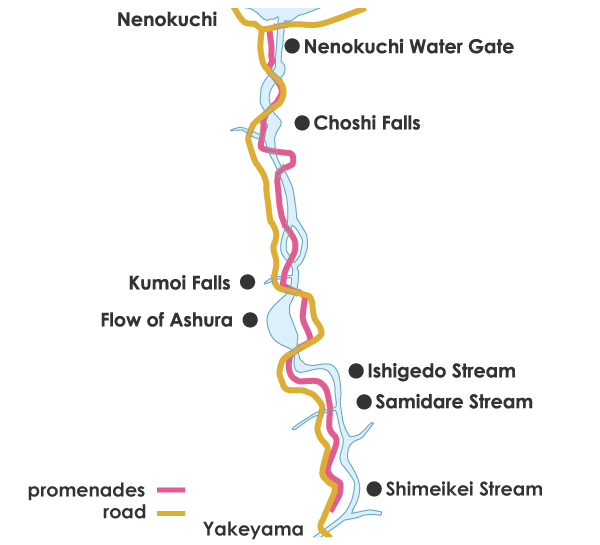
Introduction of This Area
Oirase Gorge is covered with deep natural forest. There is a landscape full of dynamism created by the flow of water. The cliffs approaching both banks are said to be formed by heat and extreme weight, where pumice and volcanic ash are deposited at a high temperature, bringing the power to the landscape of Oirase. Roads and sidewalks are created at almost the same height as the flow so you can enjoy different scenery from the ridge or hillside road. A promenade with large treetops covers the sky in layers and a green tunnel. The 14-kilometer walk in the beautiful forest is a continuous, fascinating experience.
Must-See Sights
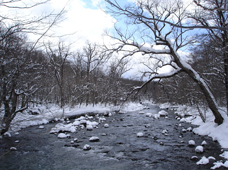
Shimeikei Stream
This area used to be a beautiful place where clear water flows through cobblestone-like riverbed. But now the earth and sand have accumulated and the old form has been lost. However, there is wonderful winter scenery in this area and it is still one of the photography spots that you can’t throw away.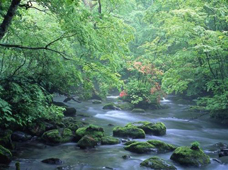
Samidare Stream
Reagarding of rich amount of water, the flow is not so fast. In the moderate flow of stream,various kinds of moss grow naturally on the rocks that are arranged in nice distance. The middle of May is the best season for taking pictures, that Rhododendron albrechtii is in bloom on the rocks.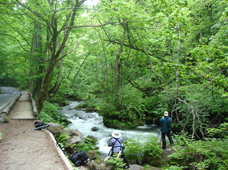
Ishigedo Stream
Ishigedo Stream is a view that is not too intense, but it is not too mild. There are various flows around here, such as “cool flows” that have been seen in TV commercials.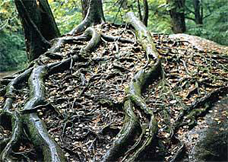
Ishigedo Folklore
“Kedo” is a dialect of this region, meaning “hut”. “Ishigedo” means a hut made of stone, called Iwaya. In fact, one of the large rocks is supported by a giant tree and looks like a rock hut. And a legend is handed down from this natural Iwaya. In the past, a beautiful bandit called “Demon’s pine” stood here, stealing money from travelers. When a man on his journey appears, she tricks him by pretending to fall down, and she stabs the man who tries to help her with a short sword. She also asks the man to help her cross the river and suddenly stabbed him with a sword in the middle of the flow.- By the way, there were two big trees that supported the stone that this female thief lived in, and one of them was said to be 200 to 400 years old, but in August 1988, the tree broke leaving a 4m trunk.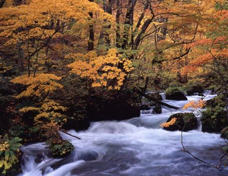
Flow of Ashura
The flow of Ashura can be said to be a “representation of Oirase ” and frequently introduced on TV, magazines, and posters.The scenery created by the violent flow between the thick trees is very masculine. During holidays, it is usually crowded all day with people who draw and take pictures.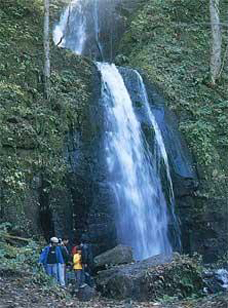
Kumoi Falls
Kumoi Falls, falling in three steps from a cliff surrounded by dense forest, is 20 meters high, has plenty of water, and is one of the best waterfalls along this stream . Many of the waterfalls from the tributaries into the main stream, are the result of erosion of the main riverbed over the years, creating a large drop between them. And the waterfall is destined to retreat upstream while eroding the rock little by little and eventually disappear someday. This Kumoi waterfall has abundant water, so rocks are eroded quickly, and it is retreating to a deeper depth than other waterfalls.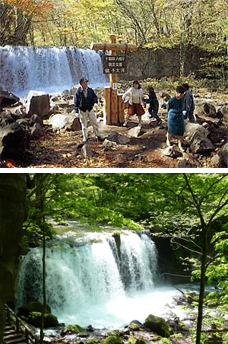
Choshi Falls
The best waterfall in the Oirase Gorge mainstream, Choshi Falls is 7 meters high and 20 meters wide. It ‘s a magnificent waterfall that produces water splashes. Choshi Falls is thought to have been created by the fault extending to the right of the waterfall and the cold water flowing from the left, hindering the fish going up to Lake Towada, For that reason, it has long been said that fishing is not recommended for Lake Towada. The only waterfall in the Oirase main stream is gaining popularity with many people. Spring fresh green, summer deep green, autumn leaves, and winter ice formations are attractive in each season. ”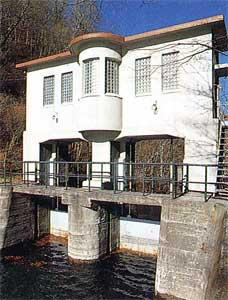
Nenokuchi Water Gate
The water of Lake Towada is used for a variety of purposes, such as agricultural water and power generation. The water that flows down the Oirase Gorge is actually controlled by the sluice gate of Nenokuchi for the purpose of limiting water flow. The Oirase Gorge is unique because of its natural flow adjustment by the lake and the gentle slope of 1 meter per 70 meters. A beautiful and delicate landscape is created. In order to maintain this beautiful landscape, the sluice is opened during the daytime to allow a certain amount of water to flow, and the sluice is almost closed at night and in winter. As a result, the main stream is the amount of water that flows from the tributaries, and the water level also drops.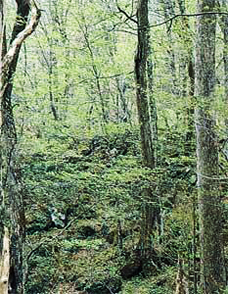
Riverside Forest with Damp Environment
Oirase Gorge is a canyon-shaped valley with a relatively wide valley bottom and a wide distribution of plants that prefer a moist environment. This river, which originates from Lake Towada, is characterized by stable water volume and low flooding. For this reason, the soil is very fertile, and trees such as Japanese cypress, Katsura, and sawagurumi are widely seen on both sides of the flow. The dark and damp forest is covered with plants such as ferns. The honey sold as Towada’s specialty is collected around here. In mid-June, beekeepers collect honeybees when they begin to plant flowers that resemble grapes upside down. Compared to general honey, it has a reddish color and moderate acidity. The taste is from the primeval forest.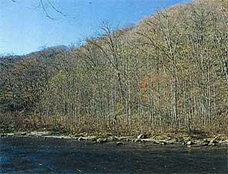
Foods of Riverside Forest and Sandbank
The Oirase mountain stream is relatively open and bright. And the expansive flow often creates the sandbank. Trees such as willows and water crab can be seen in unstable places that are flooded during rains, such as in the sandbank and on the shores. There is a large amount of alder creating a unique landscape.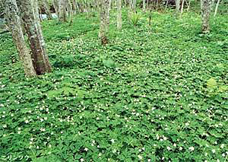
Forest Floor Dwelling Plant
May is still early spring. In the forest along the mountain stream, Kikuzaki Ichirinso and Nirinso bloom to cover the forest floor. These plants finish sprouting to fruiting in a short period after the thaw to the fresh green. When the leaves of the surrounding trees grow thick, they fall off, and the dimly lit forest is replaced by plants that prefer shade, such as ferns.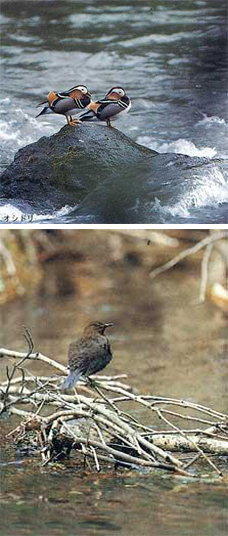
Mountain Stream Wild Birds
A clear stream that flows through the thick primeval forest. Such an image seen by people visiting Oirase cannot be witnessed around Yakeyama, the starting point. However, if you look carefully along the river, you can see various things. One of them is the wild birds of the mountain stream. the wagtail shakes its long tail up and down on the stones of the river. An intelligent bird that is slightly larger than a sparrow. You will also see mandarin duck in the river. Its flashy appearance is also brilliantly integrated into the natural colors. The big cry of “Charat, Cara” is a kingfisher. A beautiful bird with a black and white deer pattern. The kingfisher is not always seen, but it is relatively common around here. The big and long twittering bird who surprises the visitors is the Wren. He looks up to the heavens, opens his beak, and his body shakes. One of the representative birds of the mountain stream is the river glass that cries “bit, bit, bit”. It is much larger than a sparrow, has a round body, jumps into the flow and feeds underwater. There is another beautiful bird that can be seen in the mountain stream, although it is rare to see easily. It’s called Red pepper. From around June, when the trees along the mountain stream are in full bloom, it has a distinctive voice “Kyorororo…”. There is a theory that the name “Akashobin” comes from its reddish brown color, but it is also called “Southern Bird”.
Char
In late September, the autumn leaves that start at the top of Hakkoda descend to the Oirase Gorge over a month while dyeing the foot of the mountain. Char’s courtship behavior begins, and you can often see it here in Oirase, especially during this period. It’s interesting to see one male trying to get rid of the other male from females who already have a partner.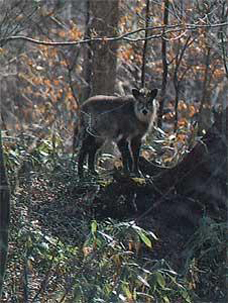
Japanese Serow
Japanese Serow sometimes show up on the flat land along the mountain stream and the slopes around it. You can see them all year round, but mostly in the early spring, late autumn, and winter season when the trees are not full of leaves. When you see them, make no noise and don’t move too much. That way, you’ll be able to observe a Japanese Serow for a fairly long time. When you make eye contact with the Japanese Serow,they are usually among the beech trees, you should be able to get a great experience that you cannot witness in the city. Let’s take a closer look at not only the beautiful scenery of Oirase, but also the forest behind it.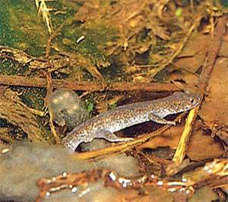
Tohoku Salamander
At the end of May, you can find something similar to a frog egg wrapped in agar like a jade. Tohoku Salamander is a semi-water-resistant salamander. They lay eggs in flowing water pools where the larvae grow, and they leave the waterside when they become adults, and then spend their time under moist fallen leaves and decayed trees. In addition, around Towada, there are Hakone Salamanders that can be seen in streams, and black salamanders that lay eggs in places like ponds and large pools.
Download the map
Oirase Area
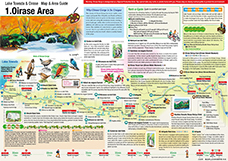
download >
Yakeyama & Tsuta Area
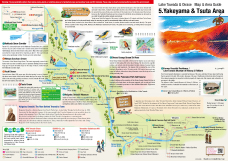
download >
